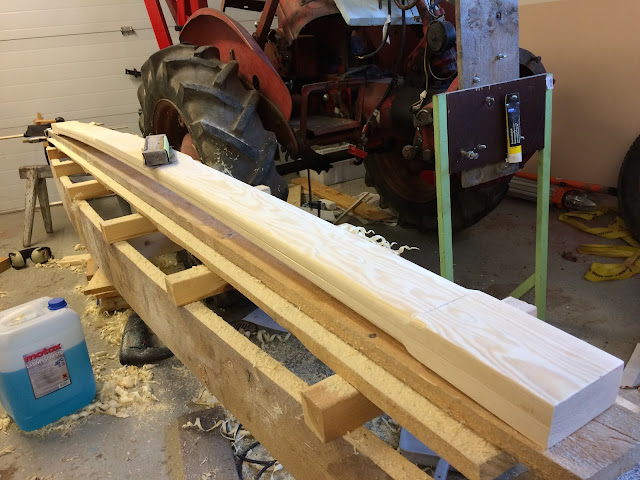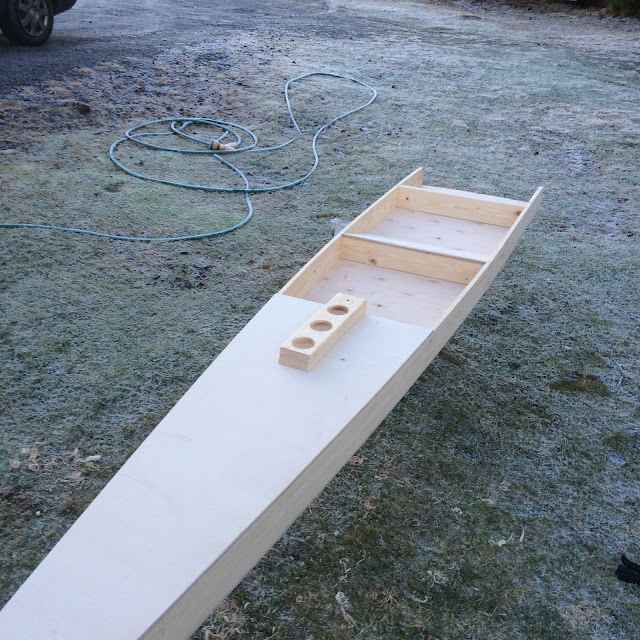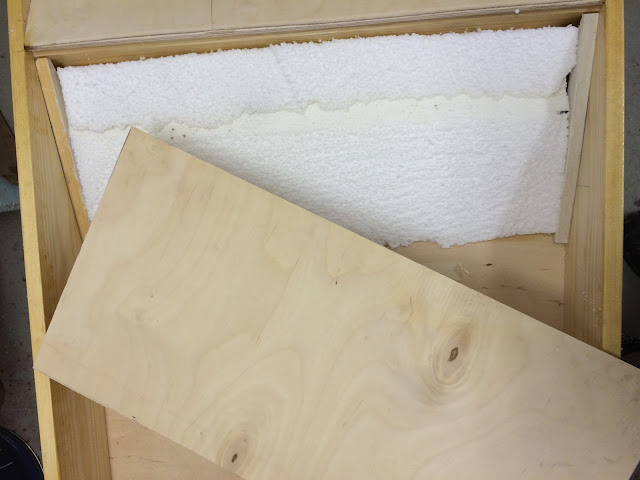I recall reading somewhere that for the Isabella Iceboat a good value for runner plank stiffness is when the rear runner plank bends 4-5 cm when having 100 kg on the middle of the runner plank. Most of the information available on the internet is for the DN iceboat. For the DN the stiffness is determined in relation to the sailors weight. One value I found for the DN is sailors weight +15-20 kg should cause about 50 mm bend. In my case both of the above is roughly the same so I will try to get the plank stiffness to be in that range.
Setting up the test. After this picture was taken I also added some round pipes to act as rollers under the piece of plywood in one end of the plank to minimize the influence of friction between the plank and floor.
 .
.Measuring the distance to the floor before applying weight on the plank.
About 100 kg.
The plank was too stiff so material from the plank needs to be removed to make it bend more. First I rounded the corners with a router but the impact on the stiffness was
The steps with measuring and removing material was repeated until I finally ended up with the plank bending ~40 mm with 100 kg weight on it. This is still in the stiffer end of the scale but I decided not to use any more time on this phase of the build.
A finishing touch with sand paper and the rear runner plank is considered ready. In this picture it can also be seen that I have left the ends in rectangular shape this because I believe it will be easier to fasten the steel fittings to a rectangular shape. Also the upper middle part of the plank that will touch the hull was left in rectangular shape.



































